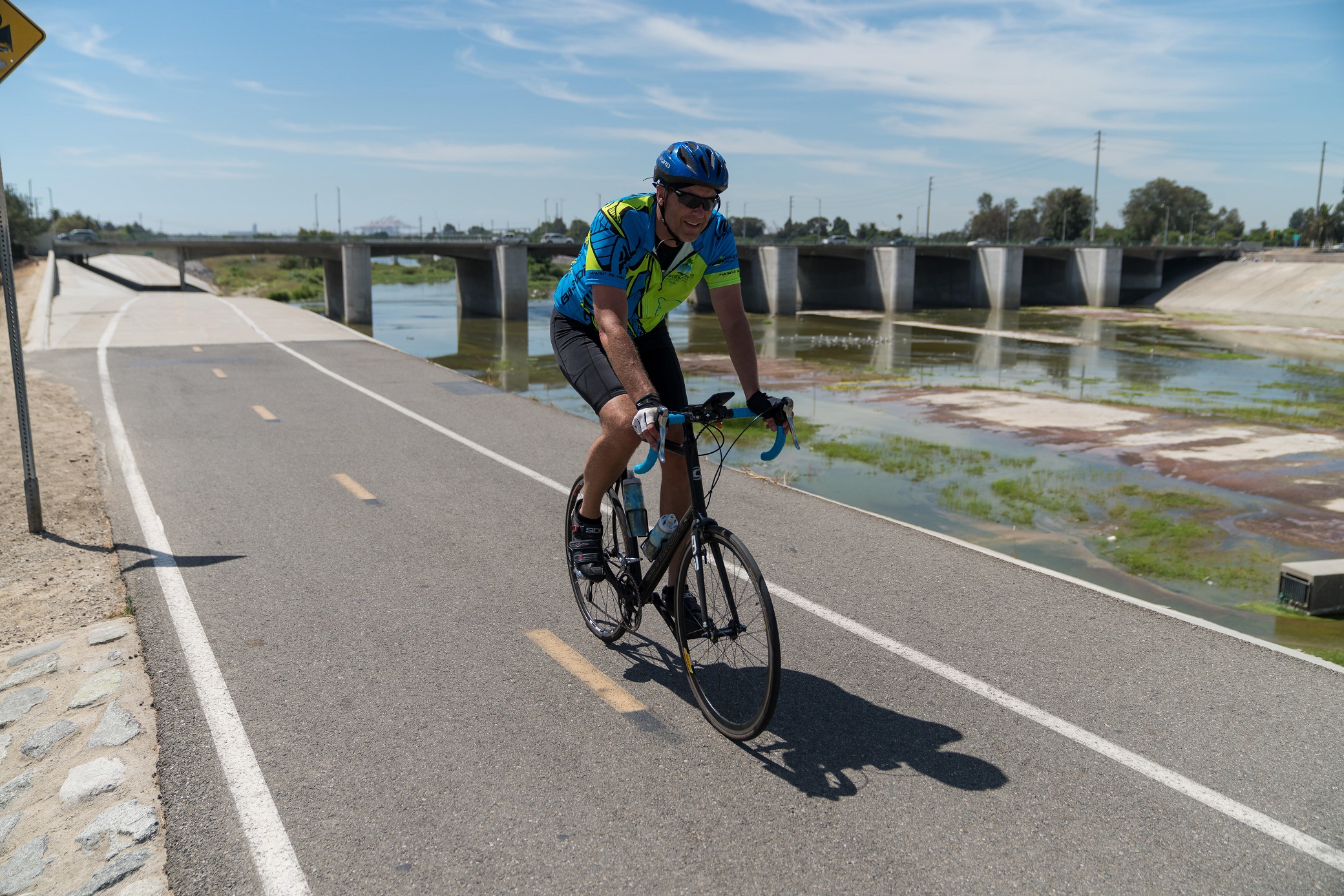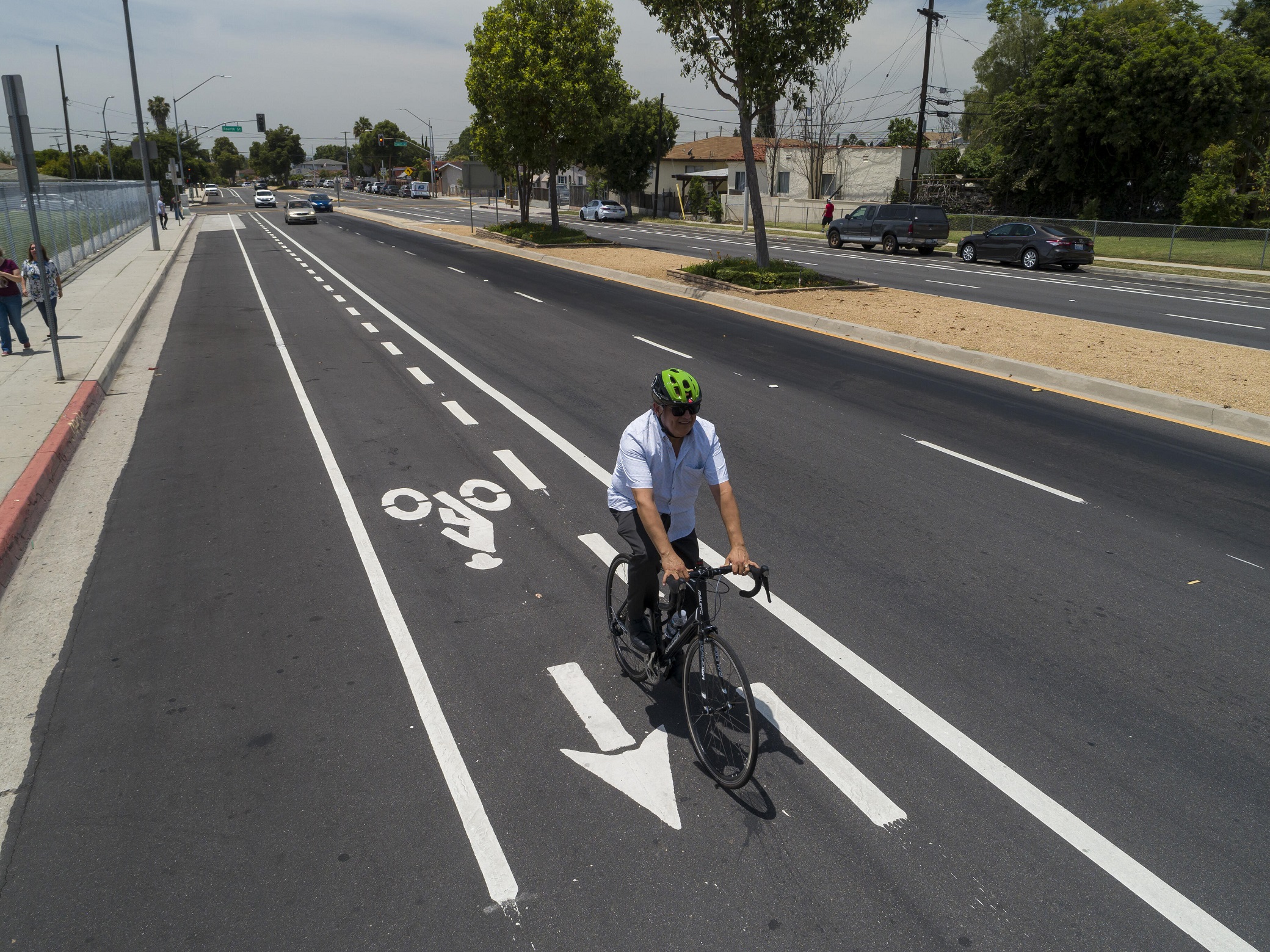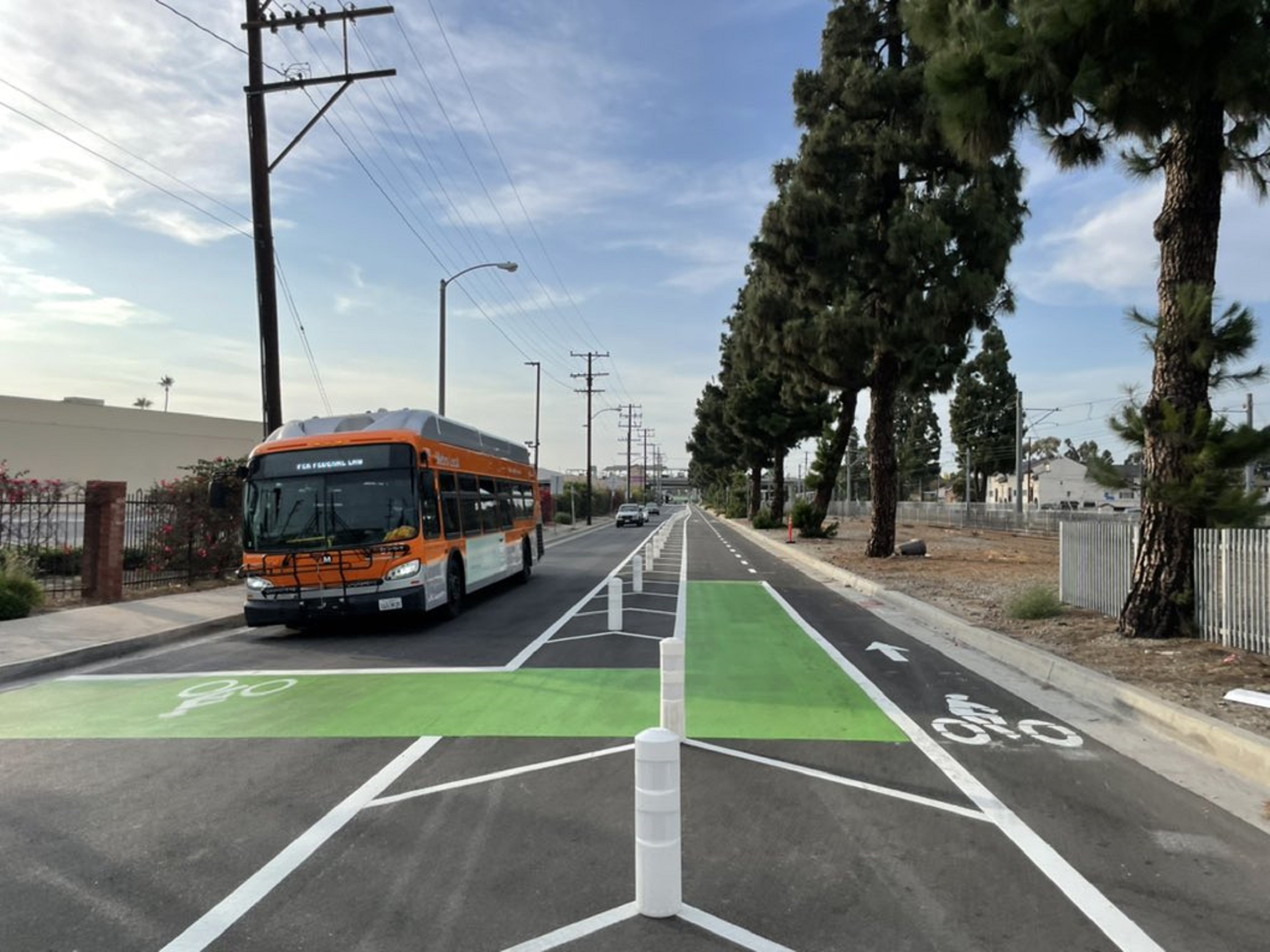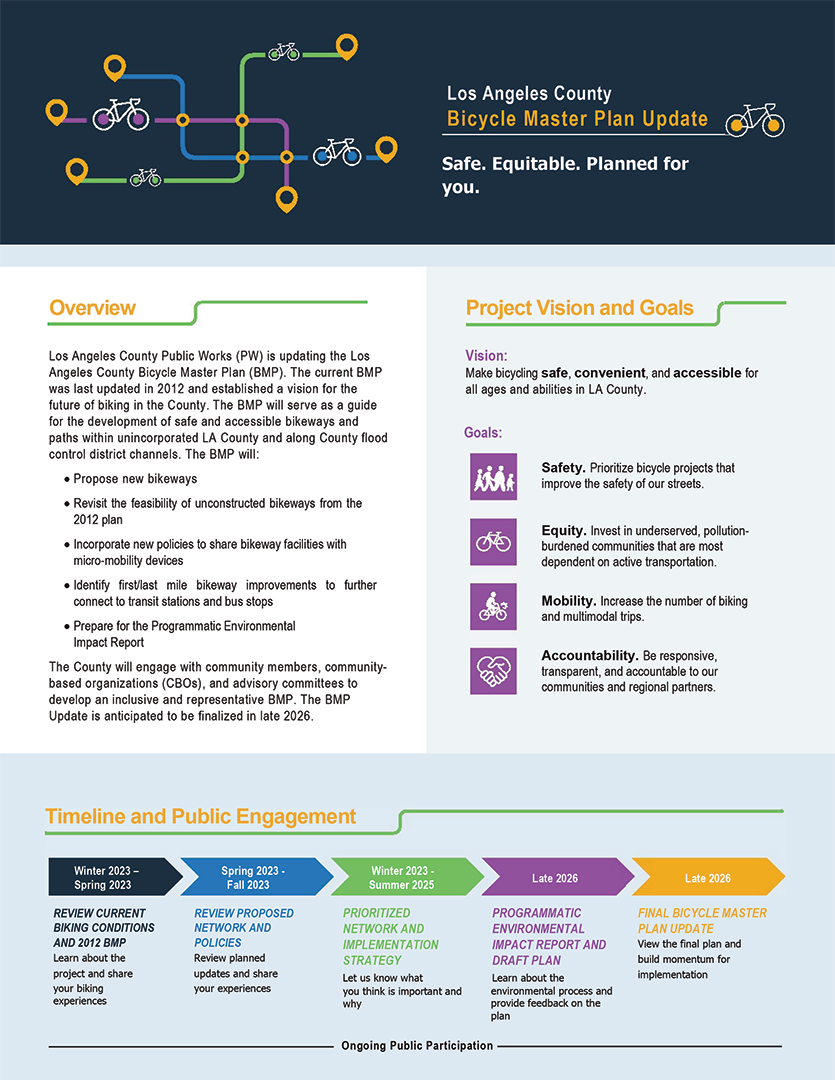Resources
Bicycle Facility Types
There are four classifications of bicycle facility types, each providing a varying level of safety and comfort for bicyclists. The BMP will assess the need for different bicycle facility classes in different locations. View the bicycle facilities classes below to learn more.
Bike paths, also known as bike trails or shared-use paths, are facilities with exclusive right-of-way for bicyclists and pedestrians, away from the roadway and with cross flows by motor traffic minimized. Some systems provide separate pedestrian facilities.

These are designated lanes for biking along streets marked by pavement striping and signage. Some bike lanes may incorporate additional buffer space to further separate bicyclists.

These are designated biking routes, typically on neighborhood streets. They may incorporate traffic calming devices such as traffic circles, intersection improvements, and other safety enhancements to lower vehicle speeds and improve rider comfort.
These are routes generally located on mountain roads that are ridden primarily by experienced and confident bicyclists sharing the road with traffic. Many signed bike routes are recreational routes that guide bicyclists through rural and mountain town areas.
These are also known as separated bike lanes because they provide a physical barrier between the bicyclist and traffic lanes, using treatments such as a curb, parked cars, or planters. Separated bike lanes can increase comfort and reduce the level of stress for bicyclists.

Documents
-
2012 Environmental Impact Review
